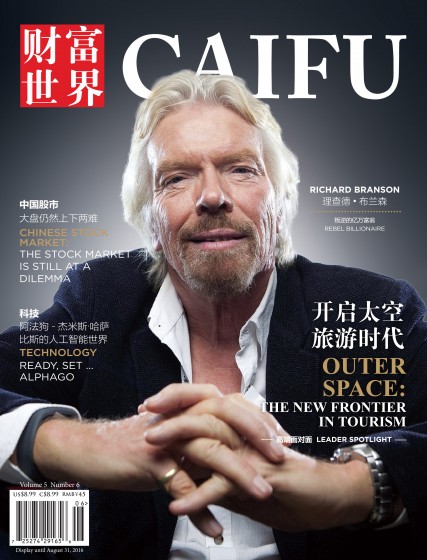eSports Gamers of the World Unite and Take Over
- Caifu Magazine | by Caifu Global
- EN
By Catherine Skrzypinski
| The Super Bowl may have been the most-watched sports broadcast in U.S. history in February 2015 with more than 114 million viewers, but competitive video gamers and their fans are waiting on the sidelines, ready to tackle the quarterback. |
With around 134 million eSports enthusiasts worldwide and annual revenues of U.S. $612 million, professional competitive gaming is now big business. Venture capitalists, along with the children of the wealthiest billionaires in China, are investing millions of dollars into the industry, while elite players are commanding seven-figure salaries and endorsement contracts. Fortune 500 companies like American Express and Coca-Cola are sponsoring global eSports events. Peter Warman, CEO of Newzoo, an international games market research company in Amsterdam, has projected that eSports will be worth $1 billion by 2017.
Gamers have played competitive computer video games – including the massively popular League of Legends, DOTA2, the sequel to Defense of the Ancients and Counter-Strike – in major venues around the world such as Madison Square Garden in New York, the Staples Centre in Los Angeles and the Sang-am World Cup Stadium in Seoul. In the meantime, dedicated eSports arenas are opening in China, South Korea, Sweden, Ukraine, the United Kingdom and the United States.
Jason Fung, chief marketing officer of Vancouver-based eSportsPools, told Caifu magazine on Wednesday, Sept. 16 that eSports is breaking viewership records every year. Currently, 205 million people around the world watch eSports, with a compound annual growth rate of 20 percent since 2012.
“To put this into perspective with traditional sports, around 27 million unique viewers watched the most recent eSports finals event Counter-Strike, compared with 20 million for the NBA Finals, 13.8 million for the World Series [Major League Baseball], and 4.9 million for the Stanley Cup Finals [National Hockey League],” Fung added. “We haven’t reached Super Bowl numbers yet, but we are getting there.”
Industry experts predict the total number of gamers will surpass the number of total sports fans by 2018.
“In many ways competitive gaming seems – at least at first glance – to resemble traditional sports,” noted Joost van Dreunen, CEO of digital games analyst firm SuperData Research in New York. “But to think that a new phenomenon like eSports can be described in terms of the old is to misunderstand it entirely. The intersection of technology, fandom and interactive entertainment is presenting us with new ways of sharing experiences on a global scale.”
eSports’s core audience consists of affluent men under the age of 35, according to an eSports Market Brief issued by SuperData Research from May 2015. However, as generations grow up with video games, eSports will appeal to an older demographic.
Only two of the top 200 grossing eSports players are female, the SuperData Research report showed. A growing number of organizations like Blizzard and the International eSports Federation have begun hosting women-only leagues to create a more welcoming environment for players and spectators. Professional organizations have also started to create female teams, Fung explained, as Counter Logic Gaming – one of the oldest teams in League of Legends history – established its CLG Red division for women in July 2015.
China Poised to Dominate eSports
Gamers around the world will be setting their sights on Europe this fall, as the League of Legends 2015 World Championship will take place in major European cities including Paris, London and Brussels. Teams will compete for the championship at the Mercedes-Benz Arena in Berlin. The winner of the 2015 Worlds tournament will receive U.S. $2 million.
Fung stated that the 2014 World Championship shattered all records for eSports, including a total unique viewership of 8 million.
“New records will be set this year,” Fung added. “South Korean teams have dominated for the past two World Championships, and fans are eager to see the Korean teams dethroned.”
Fung said he feels teams from China could rise to the occasion in the 2015 Worlds. “Chinese teams usually make it far into the tournament – they always have a chance,” he explained. “The Chinese teams are known for playing aggressively and swiftly. They focus on fast-paced action. Meanwhile, the Korean teams plan every move like a chess game; they tend to capitalize on mistakes.”
China and South Korea still leads the global eSports market with U.S. $374 million in annual revenue, reported SuperData Research’s May 2015 survey. Gamers from both China and South Korea fill and sell out huge stadiums to watch tournaments.
The current eSports market in China is enjoying fierce competition with platforms like Douyu, HUYA, Zhangi and Chinese Internet company Tencent Holdings’s own TGA, Fung pointed out.
“The number of competitors in the Chinese market has created a lot of demand for star players and personalities to attract viewers – and this demand has spread throughout Asia,” Fung continued. “For example, multimillion-dollar contracts have been extended to top performing Korean players to join Chinese teams.”
Currently, eSportsPools’ user base is mostly in North America, Europe and Russia, but Fung said the company is now targeting China. “I believe the Chinese market will be very receptive to the money-wagering side of fantasy eSports, and we are seeking out partners in China,” he added. “China will become the hub for eSports in Asia.”
Game On in Canada
Canada's largest chain of movie theatres is moving further into the world of competitive electronic gaming. Cineplex Entertainment, Inc. said Thursday, Sept. 17 that it would invest U.S. $15 million to bring eSports competitions to cinemas across the country.
“We see that eSports are quickly becoming a global phenomenon,” Ellis Jacob, president and CEO of Cineplex Entertainment said in a statement. “This investment provides us with the unique opportunity to engage a new customer base, as well as expand the concept in markets outside of Canada.”
Pat Marshall, vice president of communications and investor relations at Cineplex, said the company would introduce a gaming league with in-theatre eSports qualifiers and tournaments throughout Canada. The games will take place on theatre stages, while audience watch the competitions being streamed to other Cineplex venues.
As eSports makes its mark in the Great White North, Vancouver is a natural fit as a hub for the gaming industry, Scott Burton, eSportsPools’ CEO told Caifu magazine on Wednesday, Sept. 16. “It’s a great city for any tech and media-based startup because both the community and government support entrepreneurship and innovation.”
Vancouver Mayor Gregor Robertson has said the city’s strengths lies within its flourishing digital media sector and in technology.
“[Vancouver] has a plethora of talent in the video gaming industry,” Burton added. In addition to eSportsPools, Electronic Arts, Capcom, Nintendo and Microsoft have set up shop in the city. “Vancouver is one of the world’s most beautiful cities, and one of the best places to live in the world.”
eSports Perfect Vision in 2020
eSports will continue to grow at a rapid pace for the next five years, Fung predicted.
The International, an annual competition for multiplayer online battle arena video game DOTA2,
is an example of eSports’ booming popularity. The International boasts the largest prize pools in eSports history, Fung noted. Since its inception four years ago, the annual prize pools have increased from U.S. $1.6 million in 2011, to U.S. $2.8 million in 2012. It then jumped to U.S. $10.9 million in 2013, and reached a new high in 2014 at U.S. $18.4 million. A majority of the money raised for the prize pool is crowdfunded, Fung explained.
“The larger the prize pool, the more viewership eSports will attract, and the more money from sponsorships, advertising revenue, merchandise, and ticket sales will grow,” Fung added.
Fung has forecasted eSports will completely surpass traditional sports by 2020. “Although the eSports industry is already growing at a rapid pace, we are only at the tip of the iceberg,” he continued. “Kids are growing up watching YouTube – not television – and playing video games – not traditional sports.”
According to SuperData Research’s May 2015 report, around 91 percent of eSports fans in the United States are spending around $200 a month on three games and additional hardware, like headphones and controllers.
“As our youth gets older, armed with more disposable income, video games and eSports will be a primary source of entertainment for the next generations to come,” Fung concluded.
Follow eSportsPools on Twitter @eSportsPools.















